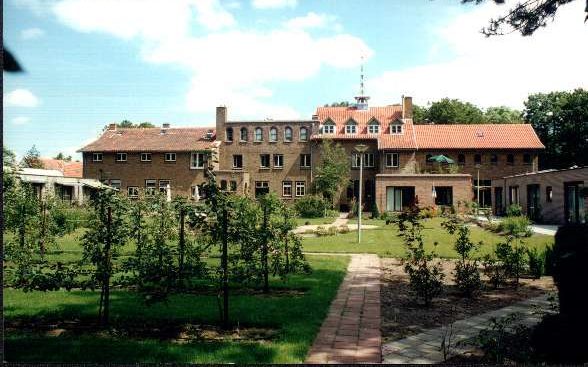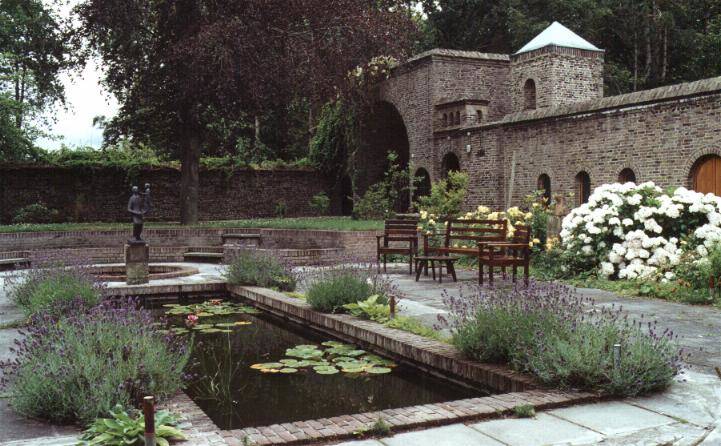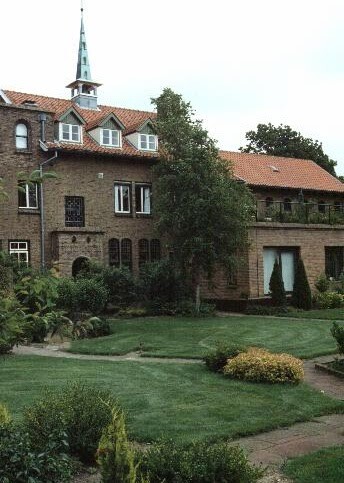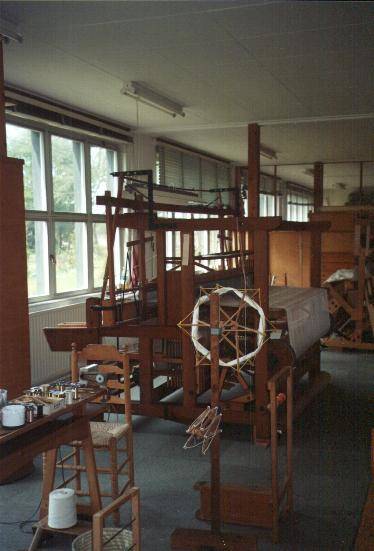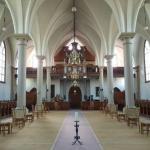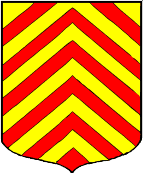Life in the Saint Liobe monastery at Egmond
The turret characterizes the monastery. The bell rings many times a day for prayer, meals or other gatherings. The times of the celebrations in the chapel can be found under
‘activities’
.
Saint Lioa Monastery
St. Lioa Monastery constitutes a monastic community in the Benedictine order. In 1935, Hildegard Michaelis founded the convent. After church approval in 1952, the official name became Congregation of the Sorores Benedictinae Sanctae Liobae Egmundensis.
The 1960s also saw the emergence of the friars’ branch, which pursued the same ideal with the sisters.
The monastery produced two daughter foundations, in Switzerland (in Orselina near Locarno) and in southern France (in Simiane-Colongue). Now they have become three independent, self-contained Monasteria. On the page
Community
you can see which sisters and brothers currently make up the monastic community in Egmond.
Hildegard Michaelis
The monastery was founded by Hildegard Michaelis. She was born in 1900 in the land of the great mystics, Erfurt in Thuringia. She shaped the community on the monastic path. Although she died in 1982, this formation is characteristic of the community to this day.
Many of the sisters and brothers carry the image of her in their hearts how she read silently in Scripture or in the works of the great mystic Master Eckehart (1260-1327), like her from Thuringia.
Her thoughts
Her looking at everything around her, at man, an animal or plant, even the simple utensils, was marked by a special attention and reverence.
“God created all things that they might be; and God created man in whom God pours himself out and overflows, so that man becoming God will give meaning to all creatures, and will flow back to God.”
(Master Eckehart, Commentary on Genesis)
The name: Saint Lioba
Lioba is a nickname, a pet name. The name was given to a niece of Boniface (675-754), Thruthgeba, who brought Christianity to our regions. She had been raised in a double monastery (men and women) in southern England.
Widely known for her knowledge of the Scriptures, she had such a lovely character that people spontaneously gave her the name Lioba (lovely, good). Boniface invited her to care for the newly converted young women, who, like the monks, wanted to devote their lives entirely to God.
The friendship between Lioba and Boniface was so close that Boniface desired that, when he died, his bones should one day be buried together with Lioba’s bones, so that, united in their lives, they might also rise from the dead together. Both of their relics rest in Fulda.
Quae sursum sunt sapite.
Know how to enjoy what comes from above.
Artistic Crafts
Ora et Labora
In Hildegard Michaelis’ vision of man and living in harmony with his God-given vocation, work held a special place. As, and while, man shapes matter, he simultaneously shapes himself. When, in the years leading up to church approval, she was asked to put on paper what was peculiar to “Lioba,” she wrote:
“The too great separation between contemplative and working life in women’s monasteries, which arose in the last centuries, is softened in our life, thus clearly pointing the way to the original intentions of the Rule.
The work will consist mainly in the manufacture of religious art. This form of life also removes the necessity of living solely on capital.”
There is a separate site for craft products: www.kunstambachtlioba.nl
In terms of “producing religious art,” to what extent was Hildegard Michaelis influenced by the socialist movements and artist communities of her time?
Her own education at the arts and crafts school of the “Lärchenfeld” in Hamburg, in the 1920s coincided with the great flowering of the “Bauhaus” in Weimar, in the Thuringia region, where she herself came from. Years later, she very definitely identified with the vision of the Bauhaus. 1 of the Egmond studios bore this name.
In any case, her ideal was certainly not that only artists would join the Egmond community. On the contrary for every human child who longed to live for God, she wanted to make this monastic life possible. And her idea about the work of church art was rather a confluence of inspiration, the beauty of material and the austere form of art skill.
It is in this spirit but especially inspired by the great love for God, the source of all beauty, that “Lioba” has become a household word in church art. Traditionally expressed in what was on the stationery “Arts and Crafts of the Benedictines of Egmond.”
All this also means today: work, prayer, study, work, lessons, prayer and work again! In Lioba’s craft streets you will find the weaving shop, a pottery, a sculpture workshop where wood and stone are worked, a metalwork workshop, there is batik, the sewing room, mosaics are made and somewhere a sister is working on lithography. And all of this interrupted again and again by the peace and effort of times of prayer.
The monastery is surrounded by forest and dune areas where there are good walks. A dune map is required for the dune area. You can buy day passes at the entrance to the dune reserve.
For 2023, the startling increase in our costs has unfortunately forced us to raise rates. We ask from our guests a contribution of 70.00 euros per twenty-four hours, including meals, coffee, tea. If you want to contribute more, we welcome that, but we very much want to offer our hospitality to people living on minimum income as well. Do not hesitate to ask what is possible if you like to come but the contribution of seventy euros is too much.
We ask that you bring your own bed linen and towels. If that is a problem, you can possibly rent a sheet and towel package for 12.50 euros.
For groups, there is the possibility of booking the entire guesthouse at an additional cost.
Are you interested? Send us an email with your questions or requests. You will then receive an answer within a few days.
email: gastenverblijf@liobaklooster.nl
Guesthouse Monastery Saint Lioba Egmond
Herenweg 85, 1935 AH Egmond-Binnen
IBAN: NL09 RABO 0327003189 t.n.v. Monasterium Sint Lioba



